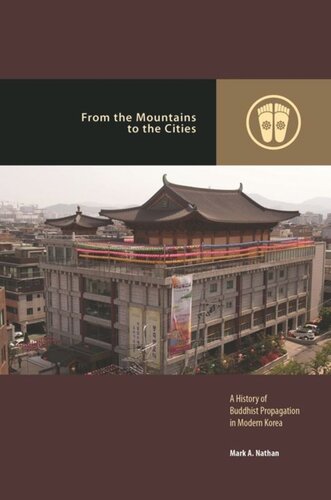

Most ebook files are in PDF format, so you can easily read them using various software such as Foxit Reader or directly on the Google Chrome browser.
Some ebook files are released by publishers in other formats such as .awz, .mobi, .epub, .fb2, etc. You may need to install specific software to read these formats on mobile/PC, such as Calibre.
Please read the tutorial at this link: https://ebookbell.com/faq
We offer FREE conversion to the popular formats you request; however, this may take some time. Therefore, right after payment, please email us, and we will try to provide the service as quickly as possible.
For some exceptional file formats or broken links (if any), please refrain from opening any disputes. Instead, email us first, and we will try to assist within a maximum of 6 hours.
EbookBell Team

4.0
36 reviewsAt the start of the twentieth century, the Korean Buddhist tradition was arguably at the lowest point in its 1,500-year history in the peninsula. Discriminatory policies and punitive measures imposed on the monastic community during the Chosŏn dynasty (1392–1910) had severely weakened Buddhist institutions. Prior to 1895, monastics were prohibited by law from freely entering major cities and remained isolated in the mountains where most of the surviving temples and monasteries were located. In the coming decades, profound changes in Korean society and politics would present the Buddhist community with new opportunities to pursue meaningful reform. The central pillar of these reform efforts was p’ogyo, the active propagation of Korean Buddhist teachings and practices, which subsequently became a driving force behind the revitalization of Buddhism in twentieth-century Korea.
From the Mountains to the Cities traces p’ogyo from the late nineteenth to the early twenty-first century. While advocates stressed the traditional roots and historical precedents of the practice, they also viewed p’ogyo as an effective method for the transformation of Korean Buddhism into a modern religion—a strategy that proved remarkably resilient as a response to rapidly changing social, political, and legal environments. As an organizational goal, the concerted effort to propagate Buddhism conferred legitimacy and legal recognition on Buddhist temples and institutions, enabled the Buddhist community to compete with religious rivals (especially Christian missionaries), and ultimately provided a vehicle for transforming a “mountain-Buddhism” tradition, as it was pejoratively called, into a more accessible and socially active religion with greater lay participation and a visible presence in the cities.
Ambitious and meticulously researched, From the Mountains to the Cities will find a ready audience among researchers and scholars of Korean history and religion, modern Buddhist reform movements in Asia, and those interested in religious missions and proselytization more generally.